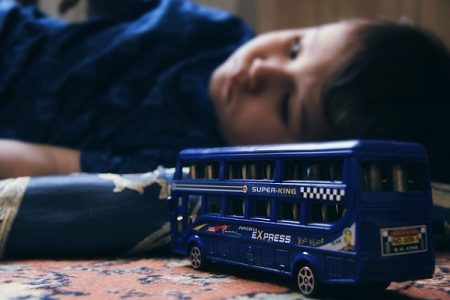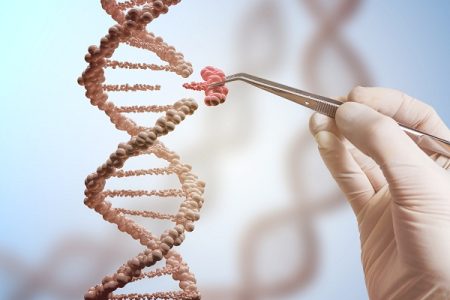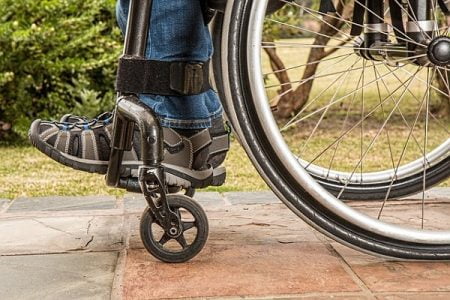
Types of muscular dystrophy and life expectancy
Muscular dystrophy is a group of hereditary muscle disorders characterized by weakening of the muscles in the body. The condition is extremely disabling and causes progressive muscle weakness, defects in muscular proteins and the destruction of muscle cells and tissues.
There are more than hundred different disorders similar to muscular dystrophy. Of them a few are considered a type of muscular dystrophy. The exact prognosis depends much on the type of disease that affects an individual. These types of muscular dystrophies are:
- Duchenne muscular dystrophy
- Becker muscular dystrophy
- Limb girdle muscular dystrophy
- Congenital muscular dystrophy
- Distal muscular dystrophy
- Emery-Dreifuss muscular dystrophy
- Facioscapulohumeral muscular dystrophy
- Myotonic muscular dystrophy
Is muscular dystrophy a fatal disease? Can you die from muscular dystrophy?
Muscular dystrophy can be fatal and life-threatening. Duchenne muscular dystrophy is the most common fatal genetic disorder diagnosed in early childhood. It affects about 1 in every 3,500 male births.
Severe breathing and heart problems cause many complications in the later stages of the disease. In some forms of the muscular dystrophy, death mostly occurs in early childhood or in late teen age or in early 20s.
Muscular dystrophy prognosis
The prognosis and outlook for muscular dystrophy depends on the type and the progression of the condition.
Some people may have almost normal lifespan if the disease progresses slowly. This depends on the type of muscular dystrophy as well. Certain conditions can cause fast growing muscle weakness and functional disability. Some children who are born with a type of muscular dystrophy likely die in infancy. Some others may reach only to adulthood.
Some children can acquire severe forms of disability, while others with other types of muscular dystrophies acquire only a certain level of disability. Generally, if a child is born with muscular dystrophy or gets it in early childhood, the condition is more severe and the prognosis is worse.
Muscular dystrophy life expectancy
Becker’s muscular dystrophy life expectancy
Becker’s muscular dystrophy is a less severe form of the disease. Patients who are affected with it usually live into old age (much like normal age).
People with Becker’s muscular dystrophy usually lead a normal lifestyle without the need for a wheelchair. Although, these people can live fairly long lives, the life expectancy is determined by the progression of the disease.
Duchenne muscular dystrophy life expectancy
Duchenne muscular dystrophy is the most common childhood form of muscular dystrophy. It is associated with short lifespan. Most children with Duchenne muscular dystrophy need a wheelchair as teenagers (10-13 years), and die in their early 20s. Some people, however, may live up to 40 years.
The disease keeps on progressing and the child gets several heart and respiratory disorders in late teen age.
Congenital muscular dystrophy life expectancy
Congenital muscular dystrophy is present at birth in a child. It is usually associated with decreased lifespan. Some children may have brain disorders and malformations such as lissencephaly. These children usually die within a few months of birth.
Hydrocephalus is another condition that can occur in kids with muscular dystrophy. It is characterized by abnormal accumulation of cerebrospinal fluid in the brain, and can cause early death of the child.
Distal muscular dystrophy life expectancy
Distal muscular dystrophy is a slow progressing disease. It usually doesn’t affect a patient’s lifespan.
Limb-girdle muscular dystrophy life expectancy
People with limb-girdle muscular dystrophy lose their ability to walk between ages 10 and 12. Most of them die in their 20s or early 30s.
Emery-Dreifuss muscular dystrophy life expectancy
Emery-Dreifuss muscular dystrophy is develops in the childhood or in early teenage years. In some cases, it may cause heart problems, which may increase the risk of stroke and sudden death, thereby reducing the lifespan.
Facioscapulohumeral muscular dystrophy life expectancy
The onset of facioscapulohumeral muscular dystrophy is generally about the age of 20 years. Life expectancy is usually normal but most require a wheelchair to manage with their disability.
Myotonic dystrophy muscular dystrophy life expectancy
Myotonic dystrophy affects the muscles and other systems of the body. It is one of the most common forms of muscular dystrophy that begins in adulthood. It usually starts in a person’s 20s or 30s.
The outlook (prognosis) for each person with myotonic dystrophy may vary and depend on the particular type of myotonic dystrophy. It is a progressive disease and the symptoms worsen as a person gets older.
Life expectancy is reduced for people with myotonic dystrophy type 1 (DM1). The most common causes of death in these people are respiratory problems and cardiac complications. People with mild symptoms of DM1 may have a normal lifespan.
There is no evidence about prognosis in people with myotonic dystrophy type 2, because the information is limited. It is seen that people with myotonic dystrophy type 2 usually have a normal lifespan. But mobility may be reduced at an early age.
Although, there is no permanent cure for muscular dystrophy, its progression can be slowed down with the use of certain medical treatments. These treatment options may increase the life expectancy for people suffering from this condition and improve their overall quality of life. Read about treatment of muscular dystrophy.
Can you prevent muscular dystrophy?
You cannot prevent muscular dystrophy because it is a genetic disorder. Genetic testing can however be used for prenatal diagnosis of the disorder to detect the condition before birth. This is done using tests that are carried out during pregnancy. Genetic screening may be done for an early diagnosis and early treatment on adults and children also.
There is no cure for any form of muscular dystrophy. But treatment can help prevent or reduce problems in the joints and spine to allow people with muscular dystrophy to remain mobile for as long as possible. Treatments usually include medications, physical therapy, occupational therapy, surgery, and other procedures.






